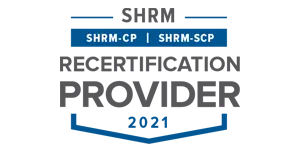KPIs are key performance indicators. You can use them to drive educated business decisions that will ensure the continued success of your operations. One of the most important KPIs for any business is your operating profit margin. Ask yourself, how accurate is yours? Your business, like any, relies on profits to expand and maintain operations. Using your KPIs effectively can help glean essential data for improvement. Learn how you can calculate and improve your operating profit margin with Six Sigma.
What Does Your Operating Profit Margin Do?
Your operating profit margin provides a measurement of your initial sales margin prior to deducting your operating expenses like administration, financing, taxes, distribution, and selling. If you’re fortunate to have a higher operating margin, this can be an added incentive for investors. Larger operating margins mean you have a higher revenue stream to spend on fixed costs or expansion. The contrary means most of your profits, if any, will be spent on developing the products sold to distributors.
Calculating Your Operating Profit Margin
- First of all, you should total your business’s operating income for a specific period of time. You can work this out with little effort. This is because your operating income equals your total profit before you deduct taxes, interest payments, and so on.
- Secondly, you must determine the total for your business’s net sales for the same period as above. Your net sales will be equal to the total sales you make after accounting for losses like returns, concessions, and damaged goods.
- Next, take your operating income from step one and divide it by your net sales from step two.
- Finally, take the result and divide it by 100. This will then give you a figure a percentage, and there you have your operating margin.
Maximizing Your Operating Profit Margin
As we all know, Six Sigma is a strong set of statistical tools you can use to divulge hidden problems such as variation and to identify the root causes behind them. This then allows you to implement improvements and eliminate variability from process execution. Six Sigma also enables continuous improvement for all your manufacturing, administrative, and business operations. There are various ways to improve your operating profit margin using Six Sigma ideas. Read on to find out what they are and how to use them.
-
Increase Productivity
Six Sigma empowers your staff to make precise measurements of the time they spend on direct and indirect activities. Making the most of everyone on your staff can be tricky, more so for larger businesses. But Six Sigma helps apply a methodical approach across departments to address these issues effectively.
-
Minimize Costs
Using the DMAIC methodology, you can define, measure, analyze, improve, and control your processes. This allows you to identify problems, such as variation, reducing these issues to fewer than 3.4 occurrences per million. Eliminating non-value-adding process stages can transform your business, increasing operating revenue by reducing costs. It also has a host of other benefits such as increased productivity and efficiency.
-
Reduce Waste
Six Sigma is highly compatible with Lean philosophy, whose aim is to reduce waste (Muda). Common wastes such as over-processing from non-value-adding processes, unnecessary transfer of information, staff, and products are all common waste causes. Additionally, untapped employee potential is also extremely wasteful.









No responses / comments so far.